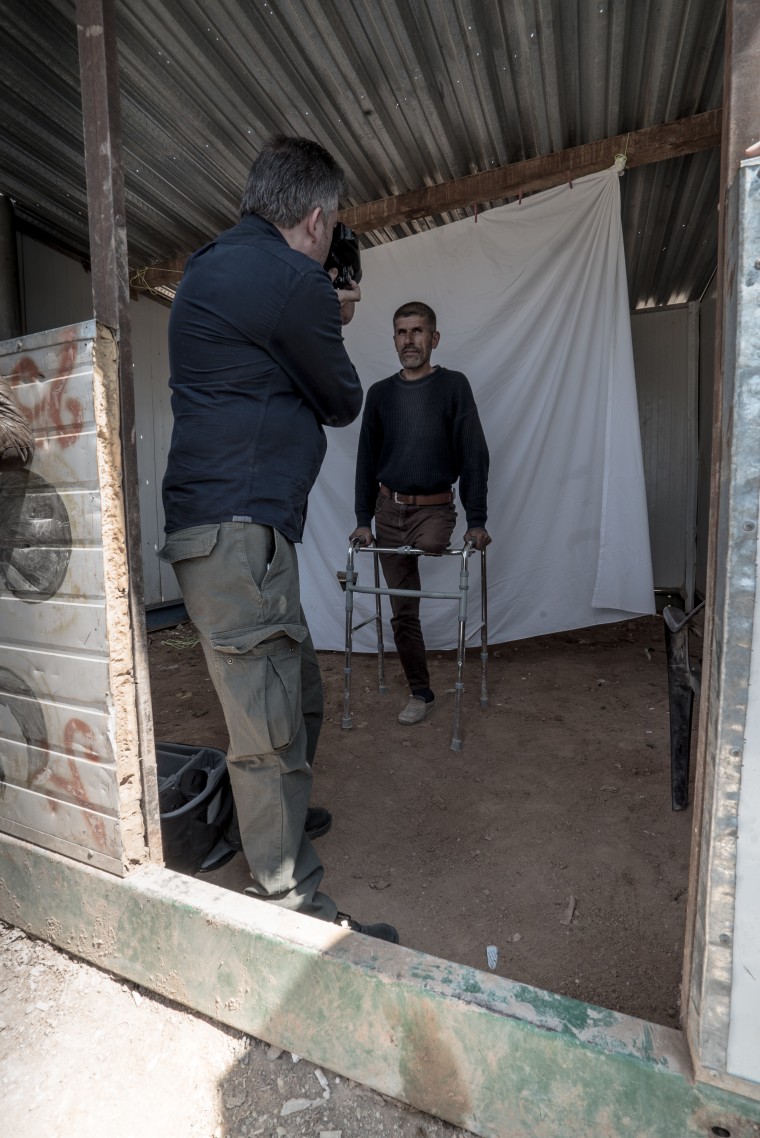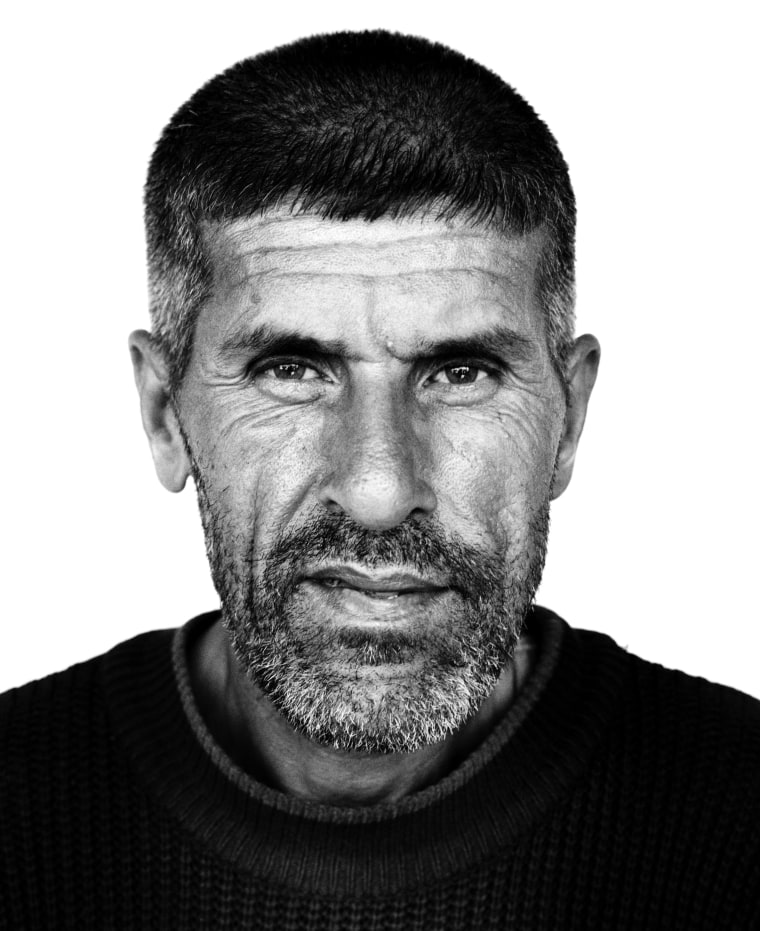MAFRAQ, Jordan — Photographer and triple amputee Giles Duley calls his injuries "a blessing."
The Londoner was working in central Afghanistan when he stepped on a landmine and lost both legs and an arm five years ago. He has endured more than 30 operations since then.
“I understand what it is to suffer from war,” the 44-year-old said as he sipped tea with a family of Syrian refugees in Mafraq, Jordan. “But you know it’s a blessing, because now I understand the people. I understand their stories more.”

Understanding and then telling stories of other broken survivors is the focus of Duley’s life, and led him to this home in a former sheep shed. He draws on his survival to help reach and photograph refugees, whose lives and bodies have also been ripped apart by war.
Take 40-year-old Ottour Musaitif, who fled Homs three years ago with her husband Ziad Darwish and eight children.
“He understands us,” Musaitif said as she cooked lunch and the photographer chatted with her children and husband. “Because we lost our lives, we lost our country, we lost our children, we lost our parents."
She insisted the photographer share the family’s meal of fried greens and flat bread.
After the meal Duley, who is on assignment with the U.N.’s refugee agency, UNHCR, photographs the family in the informal settlement. Then he hangs a white sheet outside Musaitif’s home and creates an improvised photo studio to take portraits of the family and their neighbors, who also are refugees.
Photo Gallery: Giles Duley Captures Captivating Images of Migrant Life
The simple act of putting up a sheet helps humanize his subjects, Duley said.
“You’re taking somebody out of the context and if you have somebody in a refugee camp you’ve immediately labelled them as a refugee,” he said. “By doing portraits of them this way, it’s about the person.”
The next day Duley heads to Zaatari, which is home to some 80,000 Syrians and ranks as Jordan’s fourth-largest town by population.
When he raised his white sheet next to one of the camp’s barber shops, the first in line to be photographed was Abdul Rahim Amin, who lost his leg in a rocket attack three years ago. He now gets around with a walking frame.
“Tell him in English … that I respect him for his injuries,” the 49-year-old told Duley through a translator. “He can ask me anything he wants.”

Duley chatted with Amin as he took the photograph, using his injured arm to help hold his camera.
Then he explained his theory that the best pictures are not "taken" but "given."
"I feel like each one of those photographs has been a gift," Duley said. "He came up to me and he said, 'There’s nobody else I would let take my photograph,' and then stood there and waited. And that for me is a photograph that’s been given."
